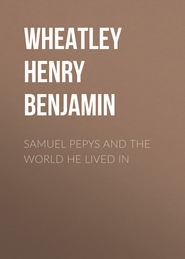По всем вопросам обращайтесь на: info@litportal.ru
(©) 2003-2024.
✖
Prices of Books
Автор
Год написания книги
2018
Настройки чтения
Размер шрифта
Высота строк
Поля
Browning.—Robert Browning’s first publication, which appeared when its author was in his twenty-first year, is a great rarity.
“Pauline; a Fragment of a Confession. ‘Plus ne suis ce que j’ai été, Et ne le sçaurois jamais être.’—Marot. London: Saunders & Otley, Conduit Street, 1833.”
Mr. Slater says that there are about eight copies known, and that it was supposed to be worth £40 or £50. A copy, with an autograph note by the author, was sold at Alfred Crampton’s sale for £145. Mr. Thomas J. Wise printed a facsimile reprint in 1886, which has been used by the forger to deceive. Mr. Slater had seen a “doctored” copy of this reprint, in which Wise’s title and prefatory note were removed, the paper was rotted to make it porous, and the leaves were smoked to give them a mellow appearance. Mr. Wise’s paper is thicker than the original, and Mr. Slater gives a hint how to distinguish the two:—
“On the final page (71) appear the words—‘Richmond, October 22, 1832.’ If the word ‘October’ is printed in thin italics the book is without doubt a reprint. So far as I am aware, there is no other difference between Mr. Wise’s excellent reprint and the original (the paper excepted).”
Burns.—The most amazing price ever realised for a modern book was that of £572 for “Poems chiefly in the Scottish dialect. By Robert Burns. Kilmarnock, 1786.” The original price of this octavo volume was three shillings. The history of the very fine copy sold in Edinburgh in February 1898 is traced back about eighty years by a writer in Literature. In 1870 it was sold for six guineas to G. B. Simpson, of Dundee, who sold it in 1879, with some other books, to A. C. Lamb for £124. The price of the Kilmarnock Burns has steadily advanced from £3, 10s. in 1858 to £111 in 1888, and then it made the immense leap to £572.
Byron.—“Poems on Various Occasions” (Newark, 1807, 8vo) sold at Alfred Crampton’s sale for £45. “The Waltz” (1813, pp. 27), published without a wrapper at 3s., sold at the same sale for £55. Mr. Slater says that an uncut copy has been sold by auction for £86.
Meredith.—A fine uncut copy of George Meredith’s Poems, 1851, sold at a sale of Rare Books and Manuscripts (Sotheby, March 1897) for £17, 10s. Another copy with alterations in the author’s autograph (Sotheby, June 1897) sold for £25.
Morris.—The beautiful issues of William Morris’s Kelmscott Press advanced in price in many instances before publication, and are likely, now that the supply has ceased, to advance still more; but they vary very much according to the literary rank of the books. The edition of Keats, published at 30s., was sold lately for £12. Shelley’s Poetical Works, in three volumes 8vo, was sold at Sotheby’s early in 1898 for £8. Chaucer’s Works, folio, is out of print, and was marked by Messrs. J. & J. Leighton at £30.
Rossetti.—The first printed work of Dante G. Rossetti is of great rarity. The poet was thirteen years old when the lines were composed, and fifteen when they were printed. The title is “Sir Hugh the Heron: a Legendary Tale, in four parts. G. Polidori’s Private Press, 15 Park Village East, 1843. Private Circulation only,” pp. 24. A copy was sold at Sotheby’s in 1890 for £16. Miss Christina Rossetti’s first poems, privately printed at the same press, have brought seven guineas.
Ruskin.—“Poems by J. R., collected in 1850 for private circulation only,” a foolscap octavo volume of 283 pages, is valued at £50 or £60. The value of his sumptuous books, “The Stones of Venice,” the “Seven Lamps of Architecture,” and “Modern Painters,” is known to all, and when in good condition they look their value. The original editions of the first, 1851 to 1853, are valued at from £12 to £15. The first edition of the “Seven Lamps,” 1849, at £4, and the second edition, 1855, at £4, 10s. The “Modern Painters,” 5 vols., early editions, from £20 to £25.
Shelley.—The early editions of Shelley’s Poems and Prose Treatises were amongst the first of this class of books to attain high prices. Some may be noted here in chronological order:—
“Zastrozzi: a Romance,” 1810, was published at 5s. Bound and cut copies have sold for £5, 15s., and £12, 5s. An uncut copy, in calf, fetched £12, 5s. in 1890, and an uncut copy in morocco brought fifteen guineas in 1897 (Sir C. S. Forbes).
The most interesting of these pamphlets is the one which was the cause of its author being expelled from University College, Oxford.
“The Necessity of Atheism. Worthing. Printed by E. & W. Phillips. Sold in London and Oxford,” n.d. [1811] f. 8vo, pp. 13.
Nearly all the copies were destroyed by the printers, and Mr. Slater values a clean copy at about £20, but probably it would realise much more than that.
“St. Irvyne,” 1811, morocco uncut, Sir C. S. Forbes, 1897, £16, 10s.
“An Address to the Irish People” (Dublin, 1812) was published at 5d., and Mr. Slater values a copy at £8 to £12, but one was sold at Alfred Crampton’s sale, 1896, for £42.
“Queen Mab,” 1813, in the original boards, was sold in 1891 for £22, 10s.
“The Refutation of Deism,” 1814, fetched £33 at an auction in 1887.
The largest price, however, given for one of these pamphlets was £130 for “Œdipus Tyrannus,” 1820, at Crampton’s sale. The entire impression was destroyed except seven copies, only two or three of which are known to exist, but a reprint on vellum appeared in 1876. The British Museum possesses a copy, presented by Lady Shelley.
Tennyson.—The first editions of Tennyson’s Poems bring high prices, and the scarcest is the famous “Poems by Two Brothers,” 1827, published for 5s., and large paper for 7s. The present value of the former is about £15 to £10.
The original MS. was sold in December 1892 to Messrs. Macmillan & Bowes of Cambridge for £480. After a facsimile had been taken, it was resold to an American collector.
Dickens.—“Sunday under Three Heads” was one of the first of the novelist’s works to sell for a high price. As it is a very small book, it is not saying much to describe it as selling for its weight in gold; in point of fact, it sells for more. Mr. F. C. Kitton gives the market value of the various novels in his “Novels of Charles Dickens,” 1897. The first edition of the “Memoirs of Joseph Grimaldi” sold in July 1897 at Sotheby’s (Jack, Halliday, &c.) for £8, 17s. 6d.
Thackeray.—Thackerayana is very high priced, and the following two instances of sales in 1897 show that the tendency is still upwards:—Two incomplete sets of “The Snob,” ten numbers and thirteen numbers, 1829-30, fetched at Sotheby’s (Parlane & Dasent) £89. The eleven numbers complete, with seventeen numbers of the “Gownsman,” sold at the Mansfield-Mackenzie sale, 1889, for £25.
“The Fox and the Cat,” final proof-sheets of a story apparently intended for the Cornhill Magazine, but never published, revised by the author, with numerous corrections and additions in his autograph, sold by Sotheby’s in March 1897 (Rare Books and MSS.) for £45, bought by Messrs. Smith, Elder, & Co.
The price of the first editions of Sir Walter Scott’s novels have been long in rising, but good fresh copies fetch a good price now.
The most remarkable price for a three-volume novel was obtained in July 1897 at Sotheby’s (Jack, Halliday, &c.), when the first edition of “Jane Eyre” sold for seventeen guineas.
The question naturally occurs, Will such prices as this continue? but it is a question very difficult to answer. All that can be said is, that in this class of books there is the most uncertainty as to the high prices being sustained.
Depreciation is a factor which must be taken into consideration, but it is not at present very widespread. It is quite easy to understand why editions of the classics and Thomas Hearne’s editions of “Chronicles,” &c., have gone down in price, because the publication of superior texts has partially superseded them; but one can scarcely explain why the set of “Byzantine Historians” should fall so much in price, for these ponderous volumes have not been superseded. At the Hamilton sale in 1884 a fine large paper set of these “Historians,” 1645-1777, eighteen volumes in red morocco by Ruelle, and five in calf, only brought £4, 10s.
Mezeray’s Histoire de France, 3 vols. folio, bound in blue morocco by Derome, which sold formerly for £105, only sold for £33 at the Beckford sale.
A large paper set of Hearne’s Works, bound in red morocco, was bought at Mead’s sale for fifty guineas by an ancestor of Meerman the bibliographer. It continued at the Hague with Meerman’s library until the sale of the latter in 1822, when it was bought by a London bookseller for £200. Pickering purchased it, and sold it to Hanrott for £500; at his sale in 1836 it was bought by the Duke of Buccleuch for £400. At Watson Taylor’s sale a set fetched £200. At the Beckford sale, the set of Hearne’s Works were all on small paper, with the exception of “Camden,” “Annales,” 1717, “Fordun’s Scoticronicon,” 1722, and “History and Antiquities of Glastonbury,” 1722. The twenty-seven lots only brought altogether £41, 10s.
In conclusion, there remain two points to lay stress upon and to reiterate—
(1) That price depends largely upon condition. This every one connected with book-buying knows, but the fact is almost entirely overlooked by those who know but little of books. Constantly when a very high price is announced in the papers some person finds that he has a copy of the identical book, for which he expects to obtain an identical price, and he cannot understand when he is told that his copy is practically valueless, because it is in bad condition.
If a book is unique, he who wants it must take it as it is, and make the best of the missing leaves, the worm-holes, or the stained pages; but if several copies still exist, it will be found that the price of the bad copy bears no proportion to that of the good one.
(2) The forger is abroad whenever prices rule high. We have seen how facsimiles have been sold as the originals, and bindings have often been doctored, Maioli’s and Grolier’s being manufactured for the ever greedy demand. Fortunately, however cleverly the frauds may be produced, the expert is pretty sure to notice something that makes him suspicious, and suspicion will soon be turned to certainty; but the public are easily gulled by that to which they are unaccustomed.
Groliers may be imitated to deceive even the expert, but in respect to more elaborate toolings, such as those of Le Gascon, we are safe, because to imitate these successfully would cost so great an expenditure of time, that the forgery would be worth almost as much as the original.
notes
1
A still more elaborate edition was published by the Grolier Club in 1889. This was edited by Professor A. F. West, and printed in three volumes small quarto. It was issued in a small edition, and a sight of it is therefore difficult to obtain.
2
From Ernest C. Thomas’s translation, 1888.
3
Dibdin’s Bibliomania, Part V.
4
The versions given in Noble’s Continuation of Granger are inferior to the above, which were taken from an old MS. by the Rev. Cecil Moore, and are believed by him to be the originals. See “Bibliographer,” vol. vi. p. 92.
5
William Oldys’s “Choice Notes,” 1862, p. 38.
6
Ibid. p. 92.
7









